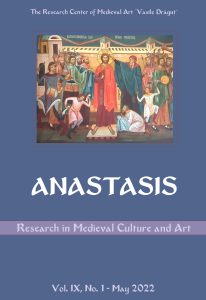The Prophet Elijah in Moldavian Iconography, ca. 1480-1530: Liturgical and Devotional Contexts
The Prophet Elijah in Moldavian Iconography, ca. 1480-1530: Liturgical and Devotional Contexts
Author(s): Vlad BedrosSubject(s): Visual Arts, 15th Century, 16th Century
Published by: Editura ARTES
Keywords: post-Byzantine iconography; Moldavian iconography; Elijah; Elisha; performative images; monastic programmes;
Summary/Abstract: This study aims to share light upon the various iconographic functions that the images of the prophet Elijah undertook in the Moldavian wall painting at the end of the 15th century and in the first decades of the following one. A funeral function is registered in his depictions from nartheka at Lujeni, Rădăuți and Bălinești, paired in the latter two instances with the Anapeson. More frequently, Elijah stands alongside John the Baptist on the thresholds of the apse, alluding henceforth to the ‘Elijah redivivus’ theological thread. His relationship with Elisha, shown in the micro-cycle from Neamț and in the iconic portraits from Voroneț and Popăuți, opens eventually Elijah’s iconography towards the theme of spiritual filiation, enhancing the monastic character of the programmes involving their connection.
Journal: Anastasis Research in Medieval Culture and Art
- Issue Year: IX/2022
- Issue No: 1
- Page Range: 45-60
- Page Count: 16
- Language: English

